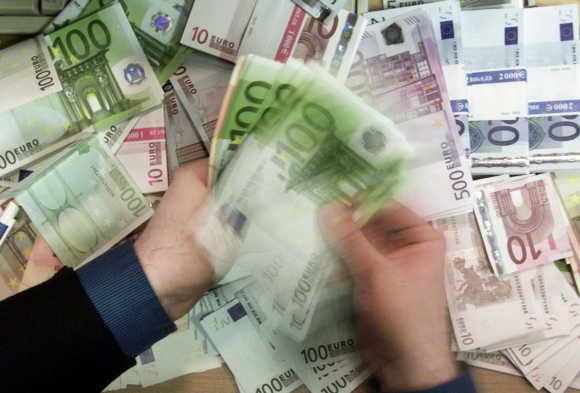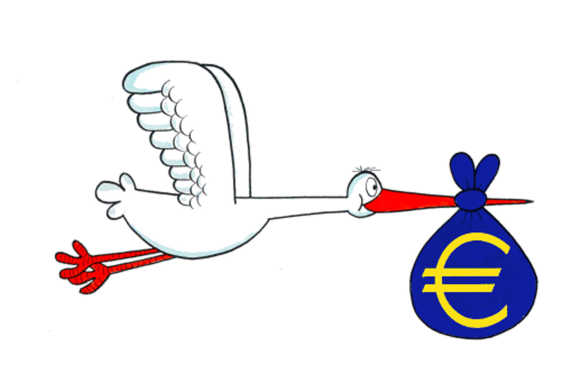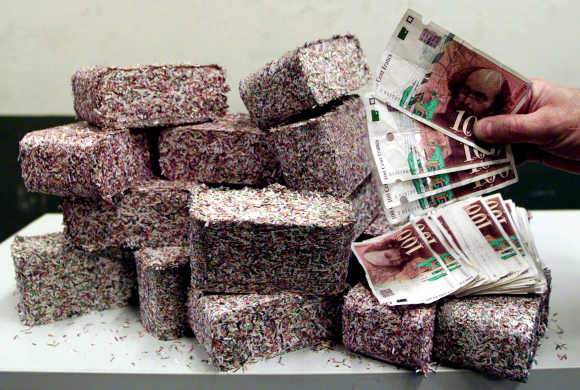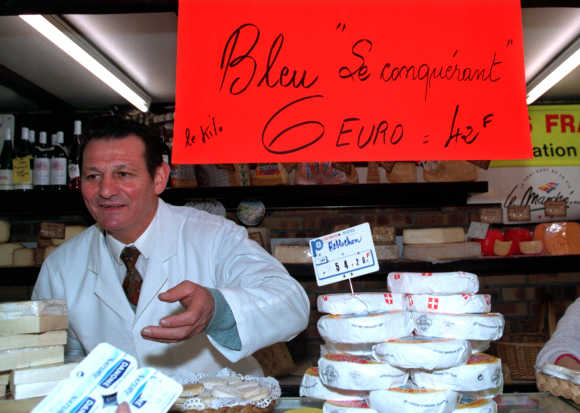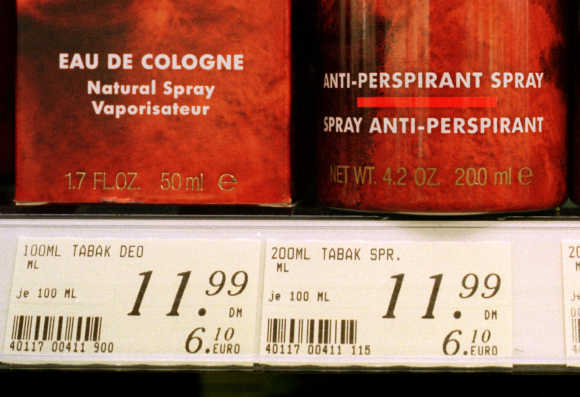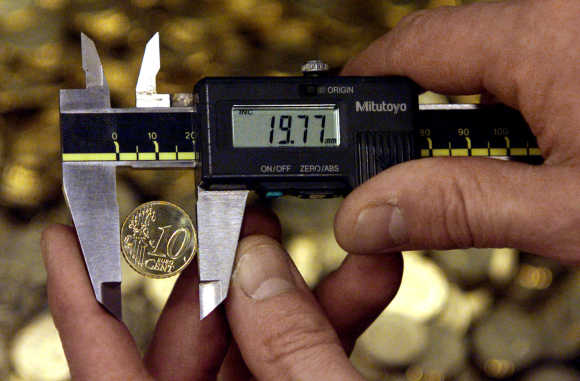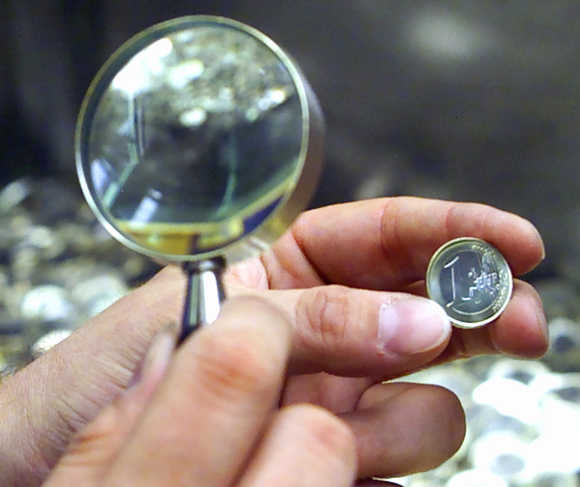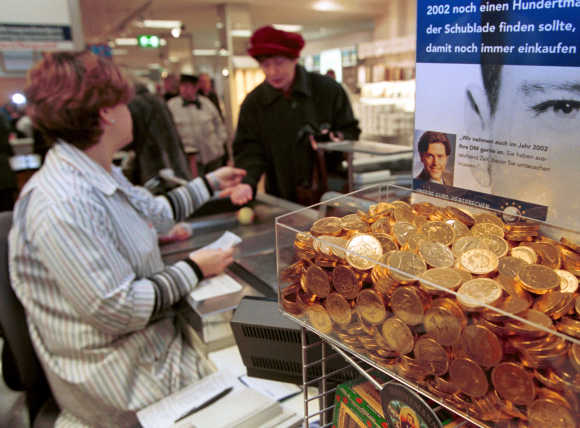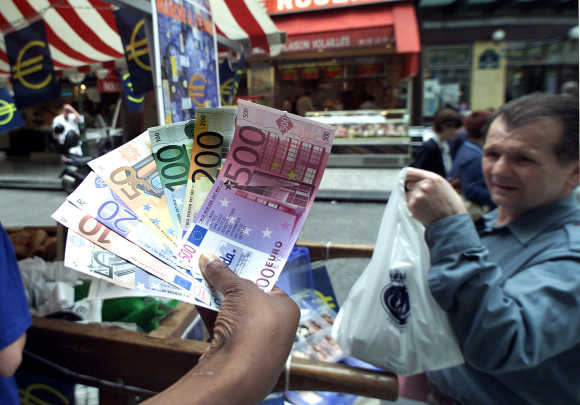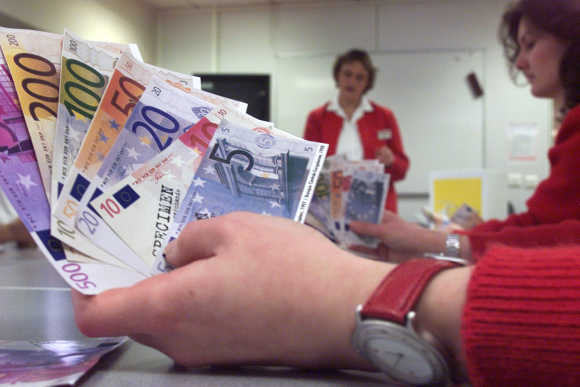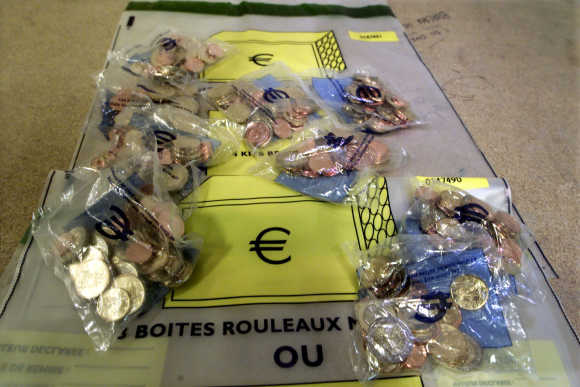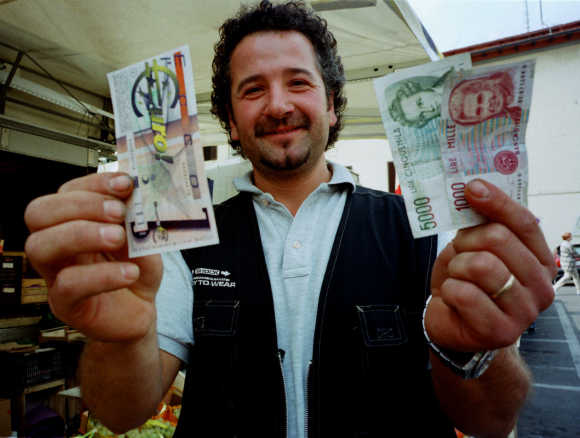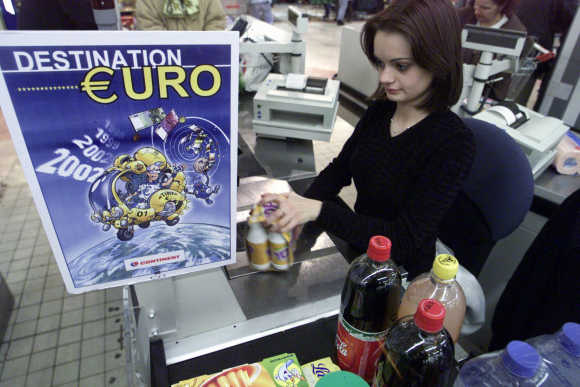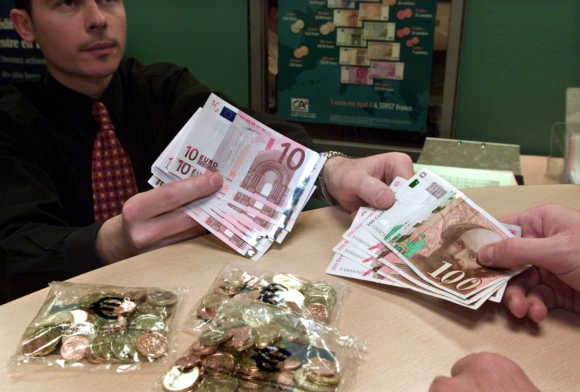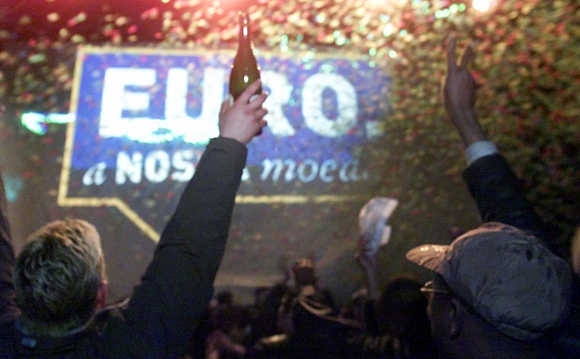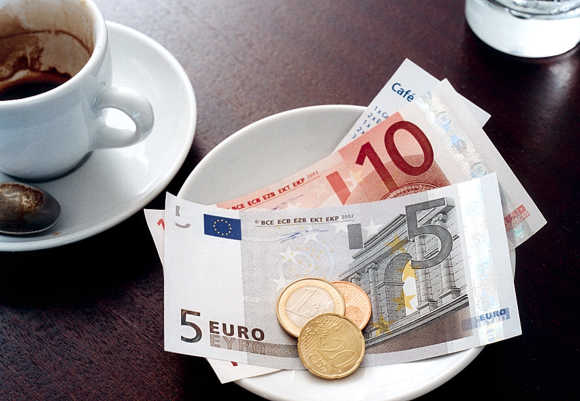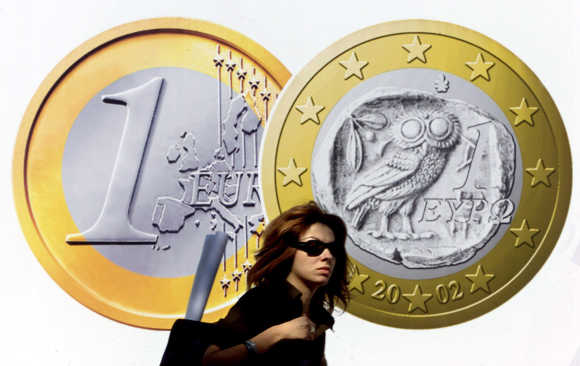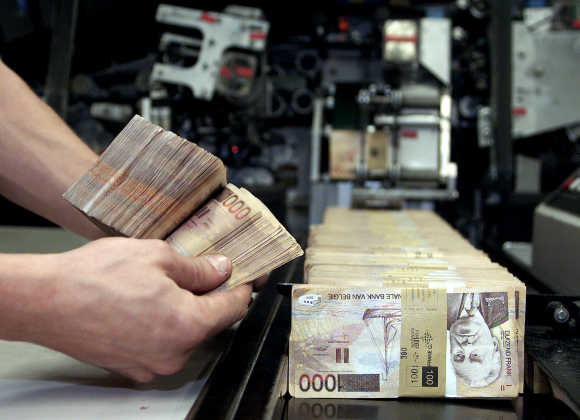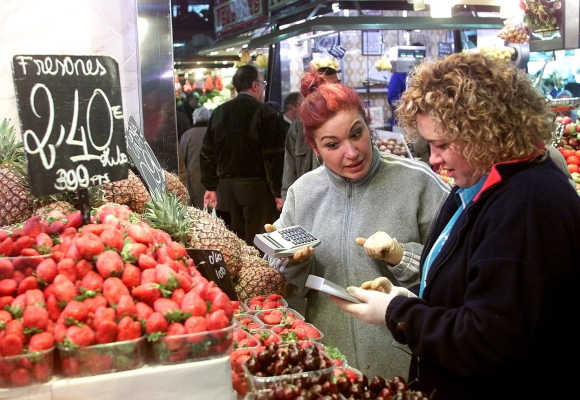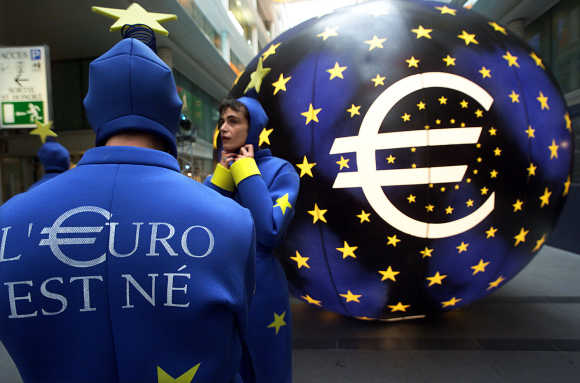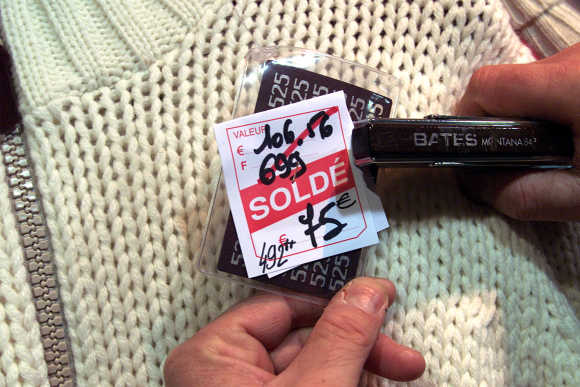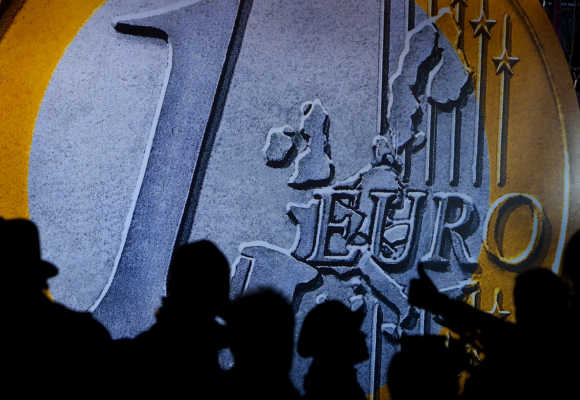 | « Back to article | Print this article |
A look at how the Euro was born
The euro is the currency used by the Institutions of the European Union and is the official currency of the eurozone, which consists of 17 of the 27 member states of the European Union: Austria, Belgium, Cyprus, Estonia, Finland, France, Germany, Greece, Ireland, Italy, Luxembourg, Malta, the Netherlands, Portugal, Slovakia, Slovenia, and Spain.
The currency is also used in a further five European countries and consequently used daily by some 332 million Europeans. Additionally, over 175 million people worldwide - including 150 million people in Africa - use currencies which are pegged to the euro.
Let's take a look at the birth of Euro.
Click NEXT to read more...
A look at how the Euro was born
Picture showing a stork holding a purse of Euro coins in its mouth on December 14, 1998. The image, thought up by the European Commission, will be used in advertisements to publicise the launch on January 1, 1999, of the European single currency.
Click NEXT to read more...
A look at how the Euro was born
Shoppers stroll down Rue Montorgueil in central Paris passing under Christmas lighting featuring the Euro logo on December 24, 2001. The new currency comes into circulation on January 1, 2002, in the 12-nation euro zone.
Click NEXT to read more...
A look at how the Euro was born
A Bank of France employee displays blocks of shredded French Franc banknotes in Marseille.
Click NEXT to read more...
A look at how the Euro was born
A cheese shop displays a sign which reads 'Blue cheese (1kg) for 6 Euros = 42 Fr' on March 22, 1996.
Click NEXT to read more...
A look at how the Euro was born
An employee at Belgium's Royal Mint collects 10 euro cent coins' rolls on December 16, 1998.
Click NEXT to read more...
A look at how the Euro was born
Price labels in Deutschmarks and Euro's are on display at a drugstore in Siegburg near Bonn on December 16, 1998.
Click NEXT to read more...
A look at how the Euro was born
An employee at Belgium's Royal Mint measures a 10 euro cent coin on December 16, 1999.
Click NEXT to read more...
A look at how the Euro was born
A youngster, known as a Euro ambassador, tries his hardest to explain the new currency to an elderly man at a market on the outskirts of Rome on November 30, 2001.
Click NEXT to read more...
A look at how the Euro was born
Christian Hofbauer, chief assayer of the Bavarian state mint checks the quality of one euro coin through a magnifying glass in Munich on June 5, 2001.
Click NEXT to read more...
A look at how the Euro was born
Chocolate Euro coins are on display as 'give-aways' for customers at the desk of a Berlin department store on the first day of business after the Euro was born on January 2, 1999.
Click NEXT to read more...
A look at how the Euro was born
City volunteers display specimen Euro notes at a Paris street market on June 15, 2001.
Click NEXT to read more...
A look at how the Euro was born
Auchan supermarket cashiers learn to use Euro banknotes and coins during a training session in Faches Thumesnil near Lille, France, on November 29, 2001.
Click NEXT to read more...
A look at how the Euro was born
Consumer kits of euro coins are seen during a funds transfer operation in Marseille, December 6, 2001. [The kits of coins, worth the equivalent of 100 French francs, will be available to the public at tobacco stores from December 14, ahead of the January 1, 2002 entry date of the new currency in the twelve-nation euro zone.]
Click NEXT to read more...
A look at how the Euro was born
Italian fruit stallholder Salvatore shows the new Euro currency and the corresponding Lira change in Pontassieve, Italy, on October 1, 1997.
Click NEXT to read more...
A look at how the Euro was born
A cashier counts purchase near a sign reading 'Towards Euro' in a general store at Chambourcy near Paris.
Click NEXT to read more...
A look at how the Euro was born
A customer trades French francs, right, for a consumer kit of euro coins, left, as part of a simulation in a bank in Lille, northern France, December 11, 2001.
Click NEXT to read more...
A look at how the Euro was born
A consumer reads a guide about Euro as queuing to purchase an Euro kit at a Rome post office on December 15, 2001.
Click NEXT to read more...
A look at how the Euro was born
Portuguese celebrate the new European currency during year-end festivities in downtown Lisbon on January 1, 2002.
Click NEXT to read more...
A look at how the Euro was born
Technicians on a hydraulic elevated arm wave after placing the just-announced exchange rate of the Franc against the Euro next to a giant mural representing a 1-Euro Coin on the facade of the Group Banques Populaires building in Paris December 31, 1999.
Click NEXT to read more...
A look at how the Euro was born
The first stamps in euros and francs for use on letters destined for the euro zone on January 2, 1999.
Click NEXT to read more...
A look at how the Euro was born
Euro coins and banknotes sit on a plate on a cafe table as the European Central Bank unveils euro notes and coins on August 30, 2001.
Click NEXT to read more...
A look at how the Euro was born
A woman walks alongside a lorry where the two sides of a Greek Euro coin are depicted in central Athens' Syntagma square on October 18, 2001.
Click NEXT to read more...
A look at how the Euro was born
An employee of the Belgian Central Bank inspects Belgian frank notes before destruction in Brussels on December 21, 2001.
Click NEXT to read more...
A look at how the Euro was born
Two market vendors discuss their euro price calculations as they glance at their euro calculators next to a heap of giant strawberries priced at 2.40 euros a kilo at Boqueria market in Barcelona on January 3, 2002.
Click NEXT to read more...
A look at how the Euro was born
A postal employee uses a hole puncher to perforate French franc banknotes in order to render them unusable, in a post office in Marseille on January 7, 2002.
Click NEXT to read more...
A look at how the Euro was born
Dancers and acrobats dressed in the colours of the flag of the European Union, take part in a parade in Paris celebrating the launch of the euro on January 4, 1999.
Click NEXT to read more...
A look at how the Euro was born
Price tags in both Euro currency and Francs are readied on January 8, 2002, in a Paris retailers ahead of the official opening of the New Year sales on January 9, 2002.
Click NEXT to read more...
A look at how the Euro was born
People are silhouetted in front of a large euro coin during a ceremony outside the Frankfurt stock exchange to launch the euro coins in Frankfurt on December 17, 2001.
Click NEXT to read more...
A look at how the Euro was born
A lone anti-Euro protester stands in Westminster in central London on June 9, 2003.
